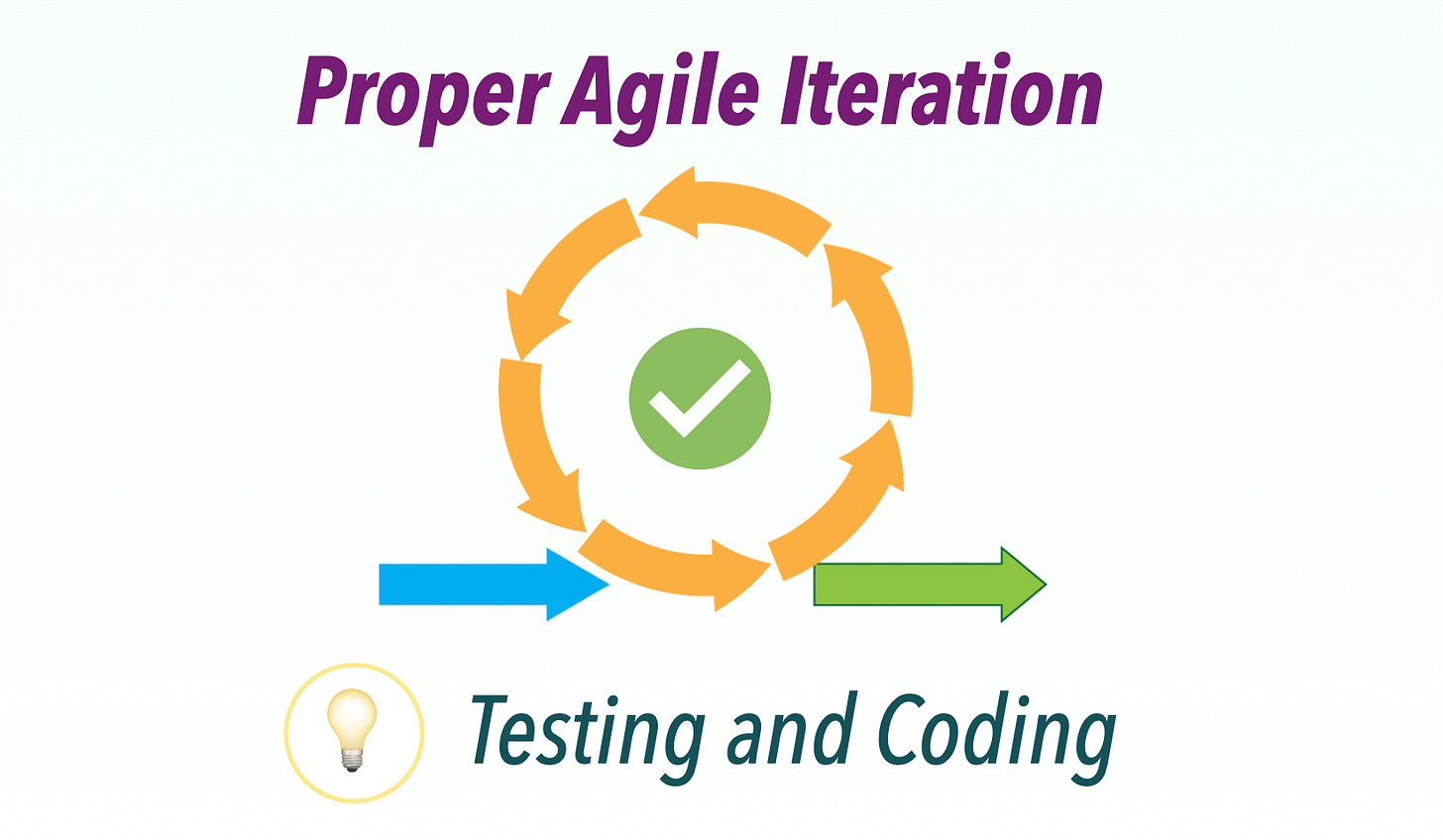What is a Proper Agile Iteration (Sprint)? Part 2: Testing and Coding *
Define the acceptance test criteria, design the test data, and automate the steps before start coding. This testing activity greatly supports coding => higher quality and greater productivity.
I share my view of “Proper Agile Iteration (Sprint)” in this series:
Part 5: Showcase (upcoming)
Part 6: ‘Production’ Deployment (upcoming)
Part 7: Sustained Pace (upcoming)
Once a user story (see Part 1) is defined, the next step is implementation. Some readers might want to correct the article's title to "It should be coding and testing." However, I chose this title for a reason. A well-defined user story includes clear acceptance criteria, meaning the developer or tester can begin preparing for testing—such as acceptance criteria, outlining steps and creating test data—while the coding is still in progress. You might have heard of relatively popular terms: “Shift-Left Testing” or “Acceptance Test Driven Development”. (Here, let’s focus solely on the process of user story implementation within an Agile Sprint.)
Junior and mid-level developers often instinctively start writing code, but this approach is not always ideal.
Let me illustrate with a simple example: “User reset password” is a common (and simple) feature that is usually done in Sprint #1.
A mid-level developer typically does the following (without going into details):
Keep reading with a 7-day free trial
Subscribe to The Agile Way to keep reading this post and get 7 days of free access to the full post archives.


